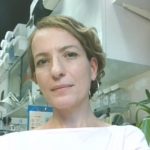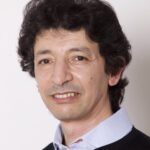Link to Pubmed [PMID] – 32199721
Link to HAL – pasteur-03757267
Link to DOI – 10.1016/j.heares.2020.107932
Hearing Research, 2020, 394, pp.107932. ⟨10.1016/j.heares.2020.107932⟩
Usher syndrome (USH) is a major cause of deaf-blindness in humans, affecting~400 000 patients worldwide. Three clinical subtypes, USH1-3, have been defined, with 10 USH genes identified so far. In recent years, in addition to identification of new Usher genes and diagnostic tools, major progress has been made in understanding the role of Usher proteins and how they cooperate through interaction networks to ensure proper development, architecture and function of the stereociliary bundle at the apex of sensory hair cells in the inner ear. Several Usher mouse models of known human Usher genes have been characterized. These mice faithfully reproduce the auditory phenotype associated with Usher syndrome and the vestibular phenotype associated with some mutations in USH genes, particularly USH1. Interestingly, very few mouse models of Usher syndrome recapitulate the retinal phenotype associated with the disease in human. Usher patients can benefit from hearing aids or cochlear implants, which partially alleviate auditory sensory deprivation. However, there are currently no biological treatments available for auditory or visual dysfunction in Usher patients. Development of novel therapies for Usher syndrome has sprouted over the past decade, building on recent progress in gene transfer and new gene editing tools. Promising success demonstrating recovery of hearing and balance functions have been obtained via distinct therapeutic strategies in animal models. Clinical translation to Usher patients, however, calls for further improvements and concerted efforts to overcome the challenges ahead.


